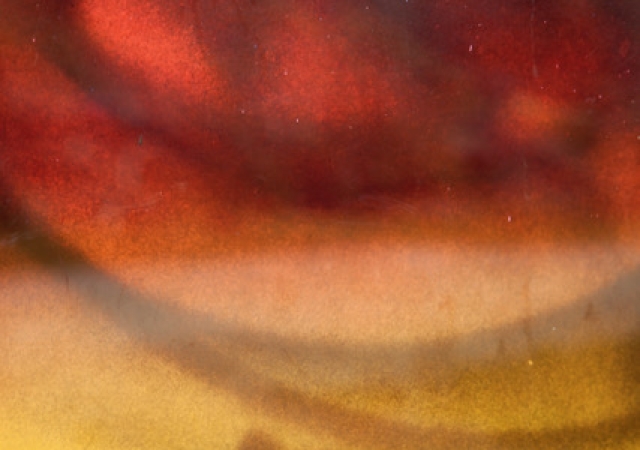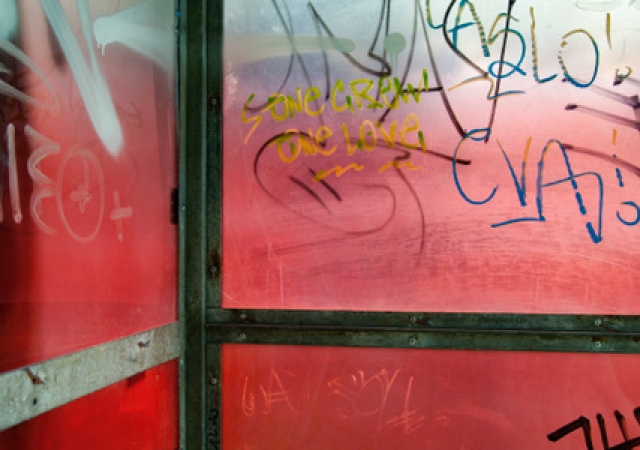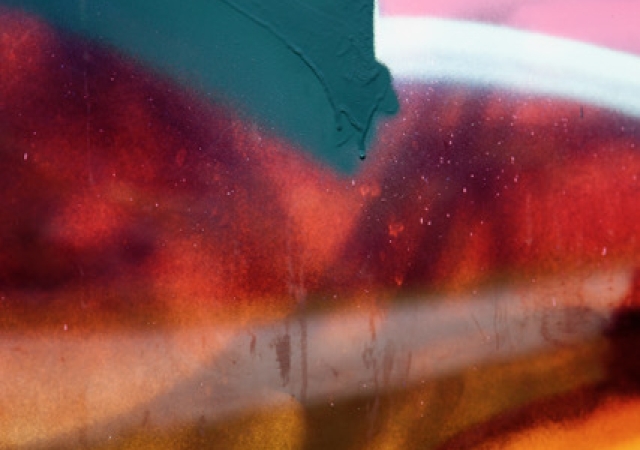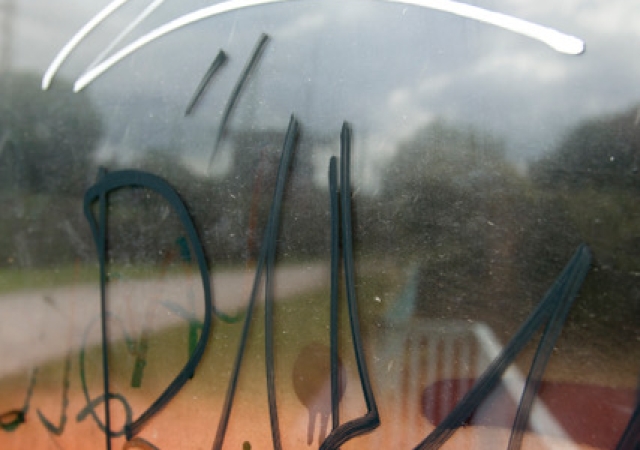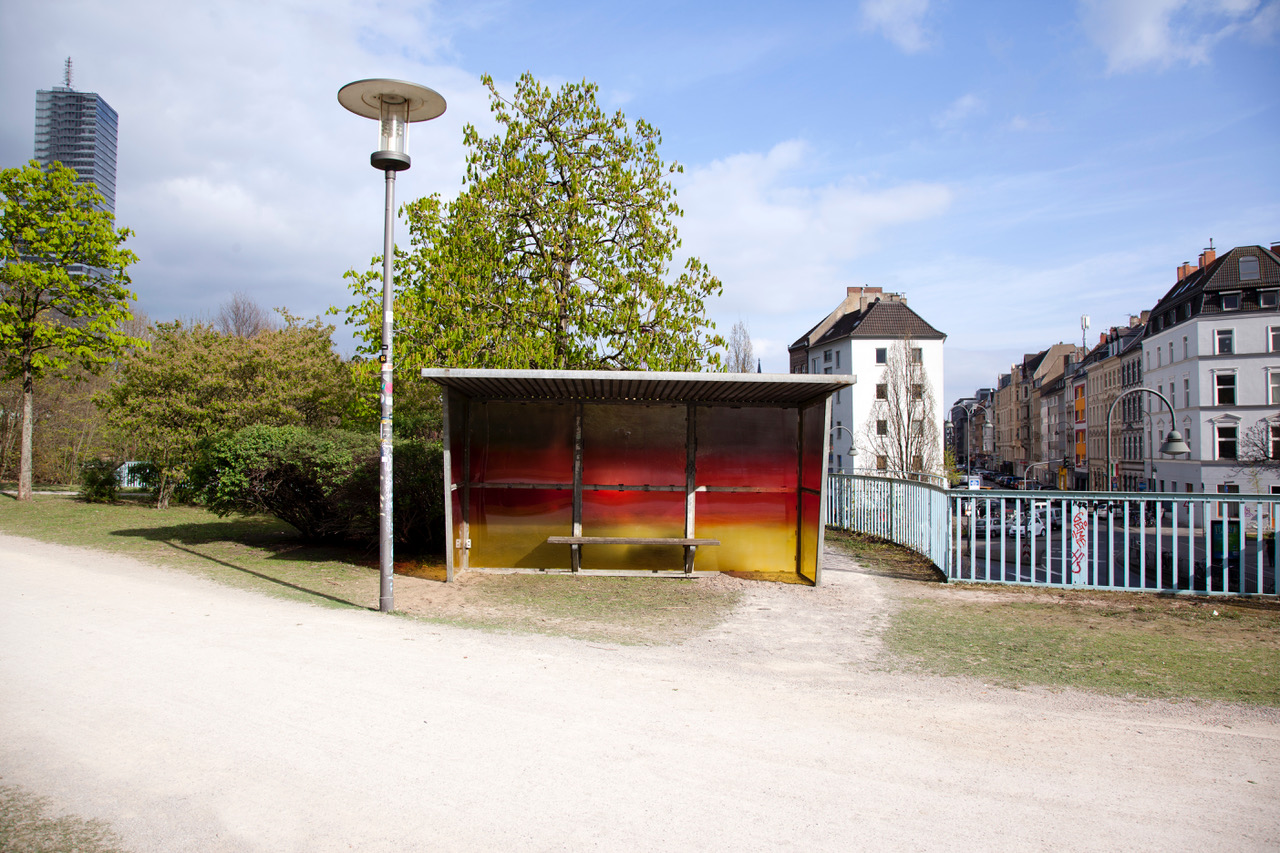
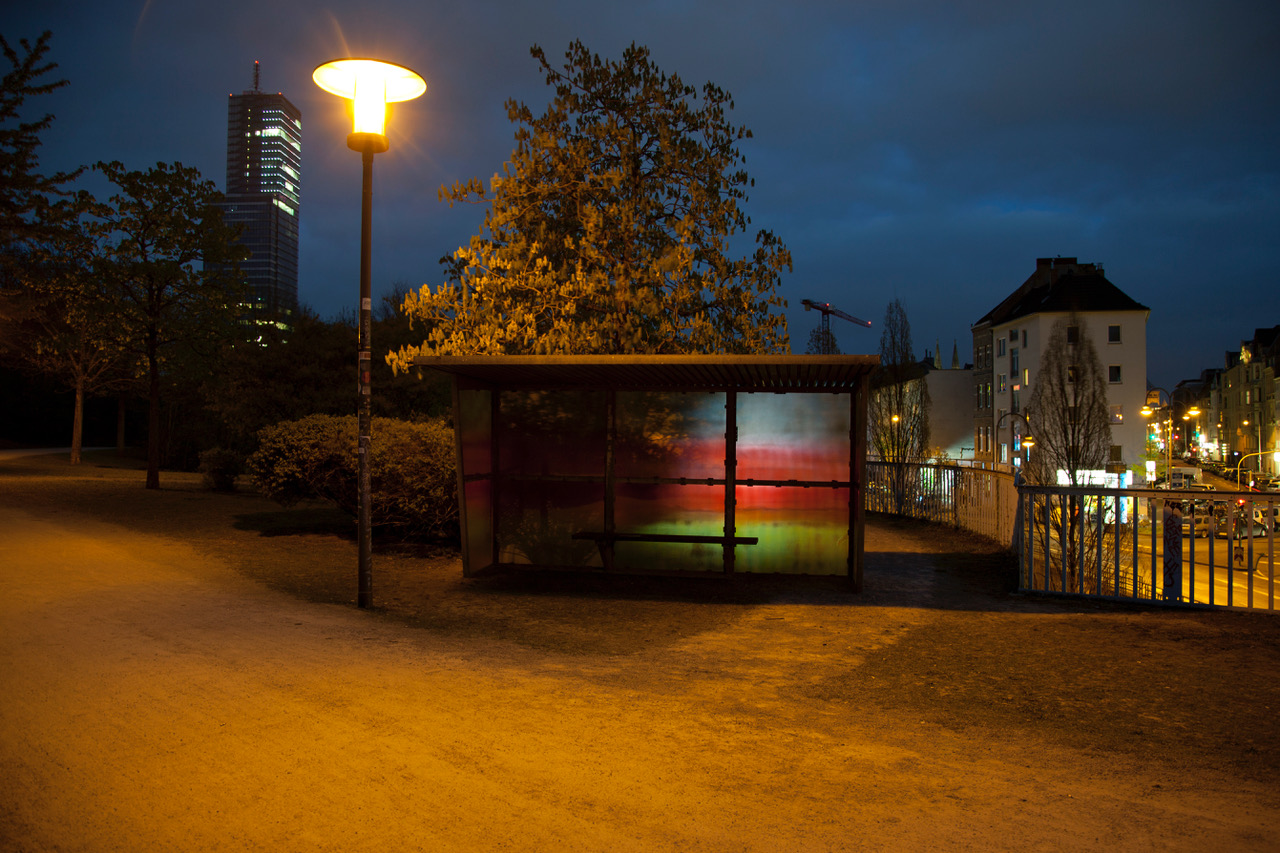
2017 (April–September), installation
ca. 420 × 230 × 220 cm
Polycarbonat, Airbrush
Five wall panels with black, red, and gold airbrushed color gradient on transparent polycarbonate.
Since taking in hundreds of thousands of refugees, Germany has become a global symbol, a place of yearning, a haven of human rights. But not all who come here stay.
For them the country is a station on an uncertain journey without prospects, a transit point.
At the same time, in Germany the national flag is again markedly more present in public space—with completely different connotations.
The bus stop is a waiting room. In urban space it gathers and frames those who wait, making them visible. It provides simultaneously a provisional protection and gives the opportunity for a temporary, random community—for a parallel existence.
In contrast to the sharply defined stripes on the German national flag, the colors in the installation cross into one another and intermingle. The tinted daylight filtered through the bus stop saturates the interior space with the colors of the flag. The mundane architectural object of the 1970s bus stop begins to glow, creating a sacred moment. Vera Drebusch and Selma Gültoprak address the ambivalent character of the flag: as a symbol of allegiance it demarcates, differentiates, and segregates. And, in any case, it forces a position of perspective.
Collaboration with Selma Gültoprak
2017 (April–September), Installation
ca. 420 × 230 × 220 cm
Polycarbonat, Airbrush
Fünf Wandteile mit schwarz-rot-gelbem Farbverlauf (Airbrush) auf durchsichtigem Polycarbonat.
Deutschland ist, seitdem es hunderttausende Geflüchtete aufgenommen hat, zum globalen Symbol geworden, einem Sehnsuchtsort, einem Hafen der Menschenrechte. Aber nicht alle bleiben hier.
Für sie ist das Land eine Station auf einer ungewissen Reise ohne Perspektive, eine Transitstelle.
Gleichzeitig ist in Deutschland die Flagge wieder deutlich präsenter im öffentlichen Raum — ganz anders konnotiert.
Die Bushaltestelle ist ein Warteraum. Im urbanen Raum sammelt und rahmt sie die Wartenden, macht sie sichtbar. Gleichzeitig bietet sie einen provisorischen Schutz, gibt Gelegenheit zu temporärer, zufälliger Gemeinschaft — zu einem Nebeneinander.
Entgegen der scharfen Linientrennung der Deutschlandflagge, gehen die Farben der Installation ineinander über und vermischen sich. Das durch die Haltestelle dringende getönte Tageslicht tränkt den Innenraum mit den Farben der Tricolore. Der profane Architekturgegenstand der 70er Jahre Bushaltestelle beginnt zu leuchten und erhält so ein sakrales Moment.
Vera Drebusch und Selma Gültoprak thematisieren den ambivalenten Charakter der Flagge: Als Symbol der Zugehörigkeit grenzt sie ein, ab und aus. In jedem Fall erzwingt sie eine perspektivische Haltung.
Zusammenarbeit mit Selma Gültroprak
Im Rahmen von St.Open
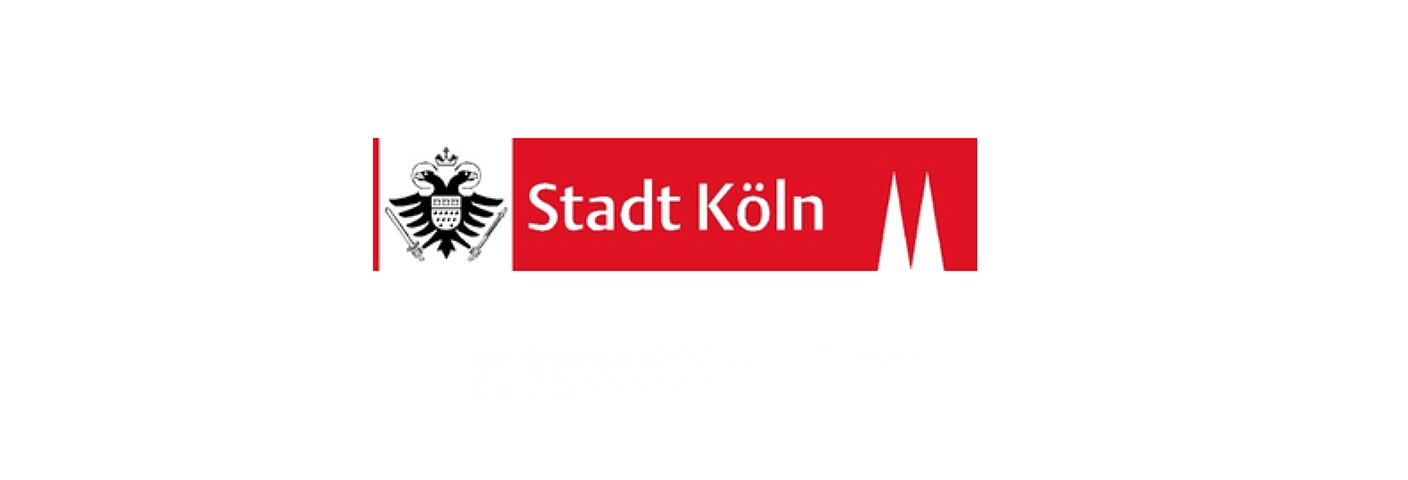
Kindly supported by | Mit freundlicher Unterstützung von

Part of the Collection of Kunsthaus Nordrhein-Westfalen Kornelimünster

